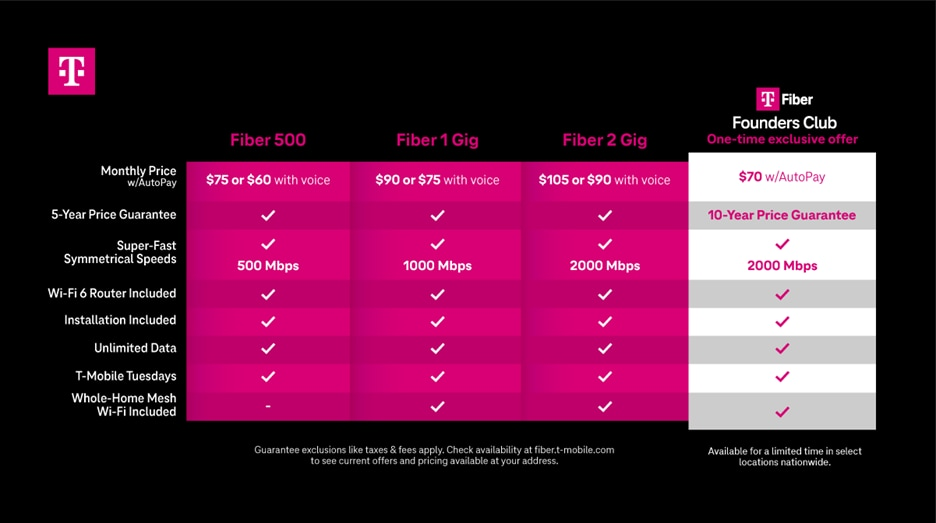T-Mobile's Blazing-Fast Fiber Internet Arrives: Is Your Home Covered?

T-Mobile has launched its fiber home internet service in the U.S., offering speeds up to 2 Gbps to select households. This move puts T-Mobile in direct competition with established cable and fiber providers.
T-Mobile has officially launched its fiber home internet service in select areas across the U.S., marking a significant expansion beyond its established 5G home internet offering. This new service promises symmetrical speeds up to 2 Gbps, a game-changer for households demanding high bandwidth for streaming, gaming, and remote work.
The initial rollout covers approximately 500,000 households, with plans for further expansion in the near future. While T-Mobile hasn't specified the exact locations, the company emphasizes a focus on areas where it can leverage existing infrastructure to deliver competitive pricing and performance. This move pits T-Mobile directly against established cable and fiber internet providers.
Unlike T-Mobile's 5G home internet, which relies on wireless signals, the fiber service utilizes physical fiber-optic cables, offering significantly more stable and faster connections, particularly for upload speeds. This is a crucial advantage for users who frequently video conference, upload large files, or engage in other bandwidth-intensive activities.
The introduction of fiber internet positions T-Mobile as a more comprehensive home internet provider, catering to a wider range of customer needs. As competition intensifies in the home internet market, consumers can expect to see more aggressive pricing and innovative service offerings from all providers, including T-Mobile, aiming to capture a larger share of the market. This launch is also great news for areas in the United States that have limited choices for high-speed internet.
T-Mobile's entry into the fiber market signals a strategic shift, challenging the dominance of traditional cable and fiber companies and potentially reshaping the landscape of home internet connectivity in the United States.